
Image © María González
圣地亚哥现代建筑指南:20个你需要了解的建筑
A Guide to Santiago's Modern Architecture: 20 Projects You Need to Know About
20世纪的智利文化建设是现代运动的一大关键产物,虽然当地的第一批项目主要来源于私营企业,他们的城市和景观设计原则通过国家现代化福利项目而体现,这些项目主要在20世纪20年代爆发的社会冲突之后开始实施。
在智利的工业化进程中,国家住房建设将住房的宜居性、普及性、实用卫生性纳入考量范围,例如在1939年大地震之后的重建项目中,这些元素均被融合在设计过程之中。智利是一个地震频发的国度,因此其现代建筑运动的概念与结构需求密不可分,也就是说调整钢筋混凝土的截面程度,这能为这些建筑带来更加直观的视觉感受。
从Sergio Larraín García-Moreno与 Jorge Arteaga对于现代运动先驱的Oberpaur大楼的构思,再到BVCH对于Portales别墅的城市理念,亦或是中产阶级建筑高度的新体验,这些现代建筑运动都对社会与城市带来了不小的影响。然而,真正称得上里程碑的作品却不多。
在本次的建筑指南中,我们为您按照时间顺序列出了20个项目,这些项目能够充分地反应智利圣地亚哥现代运动的发展与演变。
The modern movement was a key player in the cultural construction of Chile in the 20th century. Although the first projects came from the private sector, their urban and landscape principles were adopted by the modernizing project of the welfare state that began to be built after the social conflicts that exploded in the 1920s.
During chile's industrialization process, the State's housing construction incorporated concepts such as liveability, and universal access to housing and sanitation, which were put to the test early on in the reconstruction of cities such as Chillán after the 1939 earthquake. As Chile is a country that is familiar with earthquakes, it was necessary to readjust the concepts of the modern movement to national structural requirements, that is, resizing the reinforced concrete sections, which gave them a heavier visual expression than in Brazil or Argentina.
From the daring vision of Sergio Larraín García-Moreno and Jorge Arteaga in the Oberpaur building - the first of the modern movement - to the urban visions of BVCH in the Villa Portales, or the first exercises in height in the upper middle class sectors, the modern movement has left its mark on our society and in our cities. However, only one of the projects presented here is declared a historical monument.
In this edition of the architectural guides, we present you twenty chronologically ordered projects that reflect the evolution of the modern movement in Santiago, Chile.

Image © Alex Rojas
Oberpaur大楼/ Sergio Larraín García-Moreno + Jorge Arteaga
建筑连续的水平和开敞的空间展示了钢筋混凝土的强大力量,从而使它成为智利现代运动的先驱。然而,社会的反应却不如预期,1982年,记者对Teresa de Lima Campos、Humberto Eliash进行了采访,Sergio Larraín回忆说:“这并不是一件很光荣的事,常常会有人跟我说,‘你受过良好的教育,也在欧洲进修过,可是你却将这么个奇怪的东西带到这里。”
在2015年,Docomomo的秘书Maximiano Atria说,该项目由其业主来决定,它的场地具有很高的附加价值,这里的高层建筑都即将拆除。
项目时间:1929年
地点:Estado 202 al 250, Huérfanos 902 al 944
Oberpaur Building / Sergio Larraín García-Moreno + Jorge Arteaga
Its completely continuous horizontal spaces and its open plan demonstrated the power of reinforced concrete, making this the first project of the modern movement in Chile. However, society's reaction was not as expected: in a conversation with Teresa de Lima Campos and Humberto Eliash in 1982, Sergio Larraín recalled: "I was insulted on the street, they would say to me "with the traditions that you have, of having had a good education, to have been in Europe, then you bring these dreadful things here."
In 2015, Maximiano Atria, the secretary general of Docomomo, warned in the national press that "by not being protected, it is subject to the decisions of its owner, being located in an area with high added value, one where we have already begun to see demolitions to build highrises."
Year: 1929
Address: Estado 202 al 250, Huérfanos 902 al 944

Image © Manuel Albornoz
船型大楼/ Sergio Larraín García-Moreno
项目时间:1932年—1934年
地点:智利,圣地亚哥
The Boat Building / Sergio Larraín García-Moreno
Year: 1932-1934
Address: Santa Lucía 382, Santiago

Image © Santiago Nostálgico [Flickr], bajo licencia CC BY-ND 2.0
阿马斯广场大楼/ Sergio Larraín García-Moreno + Emilio Duhart + Jaime Sanfuentes + Osvaldo Larraín + Juan Larraín
20世纪50年代,在圣地亚哥的中部区域,大量建筑拔地而起,这些建筑都有着庞大的单体体量,其内部庭院都使用自然采光,并且通过连续的立面和高度与周围环境相联系。
当时的商人Jorqe Sarquís委托五位建筑师和一位来自美国的研究生在圣地亚哥阿马斯广场附近设计建造大楼,这些来自美国的建筑师都有着非常创新的思维,他们希望Jorge Sarquís能够接受新兴模式,正如Armando Caroca的回忆中所述:“时间的轨迹:圣地亚哥阿马斯广场的改造。”
阿马斯广场建筑被称为智利首类板式大厦,其空间模式是垂直的住宅体量和水平的商业布局。
项目时间:1954年
地点:圣地亚哥Monjitas 879
Plaza de Armas Building / Sergio Larraín García-Moreno + Emilio Duhart + Jaime Sanfuentes + Osvaldo Larraín + Juan Larraín
During the 1950s, in Santiago's center, buildings were constructed to fill up spaces, generating a single large volume, with interior yards filled with light that were joined with their neighbors through a continuous facade and height.
A group of five architects with postgraduate degrees from the United States were commissioned to build in an area adjacent to the Plaza de Armas by businessman Jorqe Sarquís. The architects -with fresh ideas after their years in the United States- "devoted a great amount of effort to convince [Jorge Sarquís] to accept a different model", as Armando Caroca recalls in "The Traces of Time: Entropy and Transformation in the Plaza de Armas Building of Santiago."
The Plaza de Armas Building became the first example of tower-plate typology in Chile, replicating the logic of residential vertical volume and the horizontal commercial plate.
Year: 1954
Address: Monjitas 879, Santiago
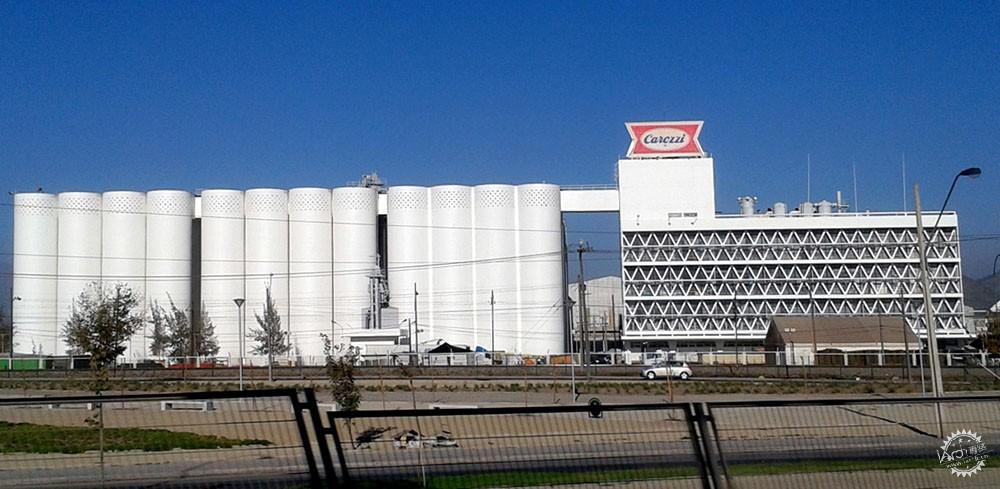
Image © Warko [Wikimedia Commons], bajo licencia CC BY-SA 3.0
Carozzi工业综合体/ Emilio Duhart + Luis Mitrovic
项目时间:1961年
地点:智利,圣地亚哥
Carozzi Industrial Complex / Emilio Duhart + Luis Mitrovic
Year: 1961
Address: Longitudinal Sur, Kilómetro 23, Santiago
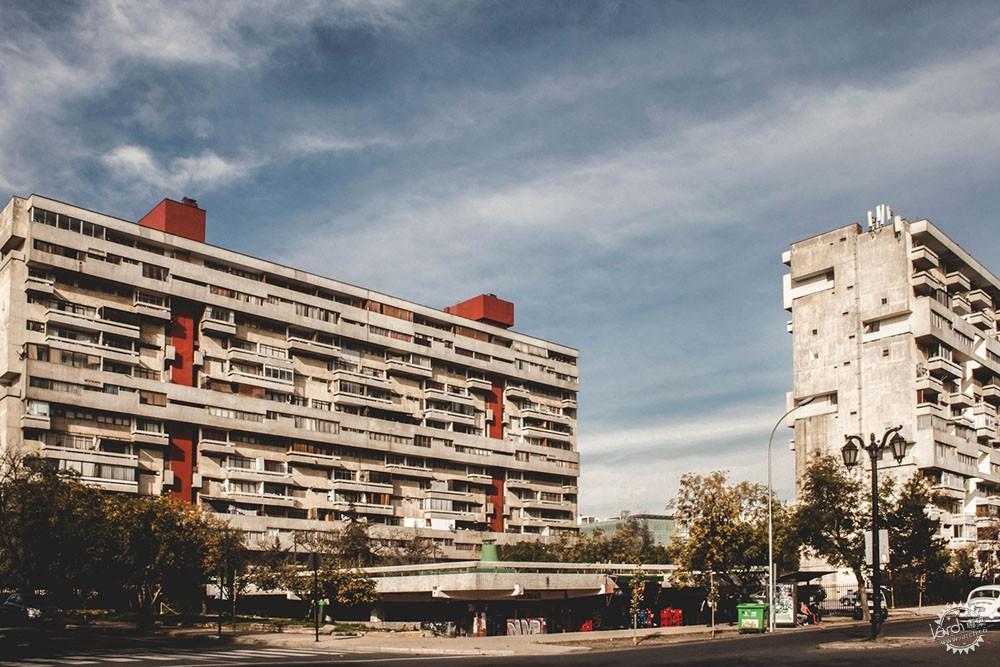
Image © María González
República Remodelling / Vicente Bruna + Germán Wijnant + Víctor Calvo + Jaime Perelman + Orlando Sepúlveda
项目时间:1957年-1963年
地点:圣地亚哥República 702
Year: 1957-1963
Address: República 702, Santiago
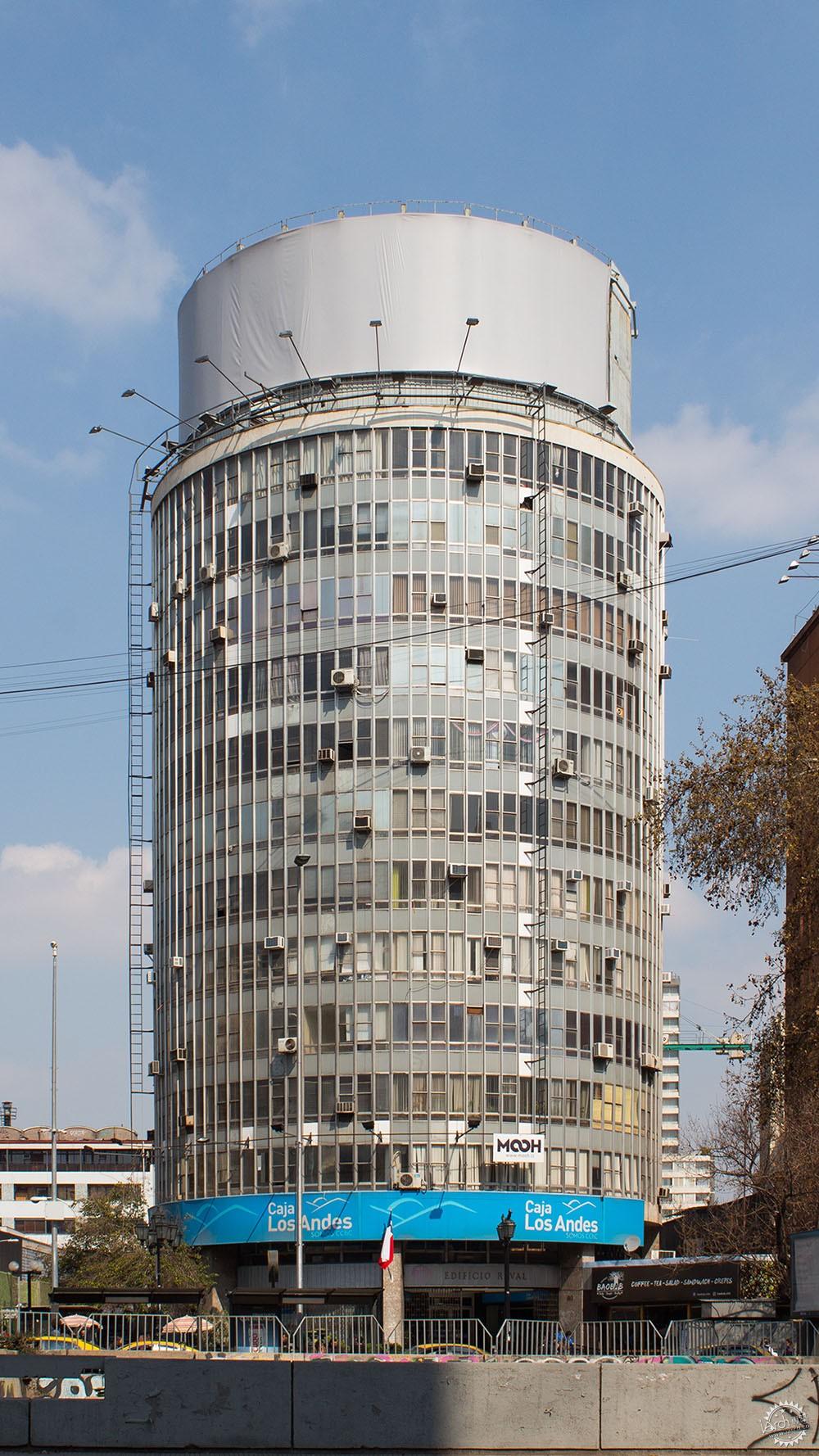
Image © Manuel Albornoz
Reval大楼/ Jorge Aguirre + Rafael Saavedra + Guillermo Geisse
这是圣地亚哥主要干道Alameda沿街造型最为前卫的建筑,其形状为圆柱形,独特的形体从周围环境中脱颖而出。建筑的一层是商业空间,13层塔楼原先用于公共生活,这座建筑对于城市有着一定的引导性,毗邻智利大学的主楼和拉莫内达宫。直到现在为止,这座建筑独特形态仍具参考性,虽然其立面上外挂了众多空调室外机,但铝制幕墙看上去仍然简洁大方。
项目时间:1963年
地点:圣地亚哥Avenida Libertador Bernardo O'Higgins (Alameda) 1112
Reval Building / Jorge Aguirre + Rafael Saavedra + Guillermo Geisse
One of the most radical formal proposals along Alameda (Santiago's main street) is this cylindrical building, which ensures its absolute independence from its neighbors. Accompanied at the first-floor level by a commercial space, the 13-story tower (originally destined as a living space) occupies a privileged place in the city's center, located next to the University of Chile's main house and the palace of La Moneda. Its unique shape remains a point of reference, and the simplicity of its aluminum façade resists with dignity the passage of time, despite the profusion of air conditioning boxes that invade it.
Year: 1963
Address: Avenida Libertador Bernardo O'Higgins (Alameda) 1112, Santiago
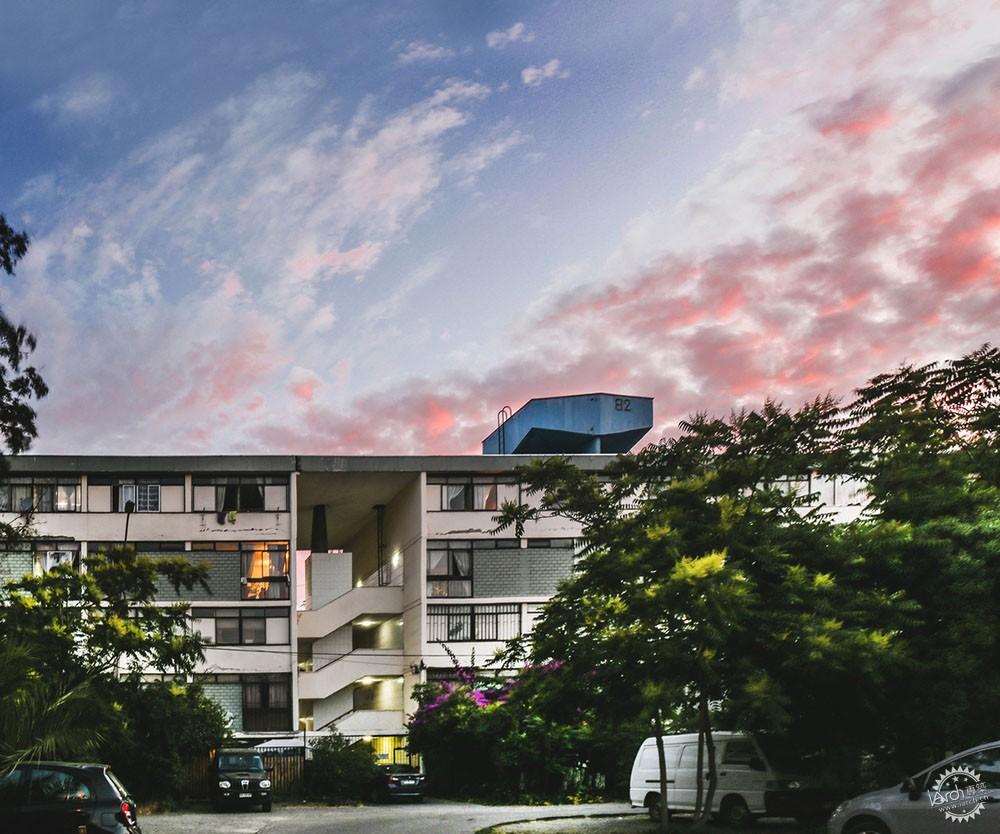
Image © María González
Olímpica住宅群/ Rodolfo Bravo + Jorge Poblete + Ricardo Carvallo + Pablo Hegedus, Julio Mardones + Gonzalo Mardones + Sergio González
Exequiel González Cortés街区因Olímpica住宅群而闻名,该项目于1960年至1963年间设计建造,目的是庆祝1962年的世界杯。它由23座两层建筑、32座四层建筑、48座5层建筑,以及一座15层的塔楼共同组成,这里共有2601个住宅单元。这些建筑有序地排列,围合成用于休闲娱乐的中央广场。
项目时间:1961年-1964年
地点:Carlos Dittborn and Lo Encalada, in Ñuñoa
Villa Olímpica / Rodolfo Bravo + Jorge Poblete + Ricardo Carvallo + Pablo Hegedus, Julio Mardones + Gonzalo Mardones + Sergio González
The Exequiel González Cortés Neighborhood Unit, better known as Villa Olímpica, was built between 1960 and 1963 to celebrate the 1962 World Cup. It is composed of 23 two-story blocks, 32 four-story blocks, 48 blocks of five stories, and a tower of fifteen floors for a total of 2,601 homes. The blocks are arranged in macro-blocks forming central squares destined for recreation.
Year: 1961-1964
Address: Carlos Dittborn and Lo Encalada, in Ñuñoa
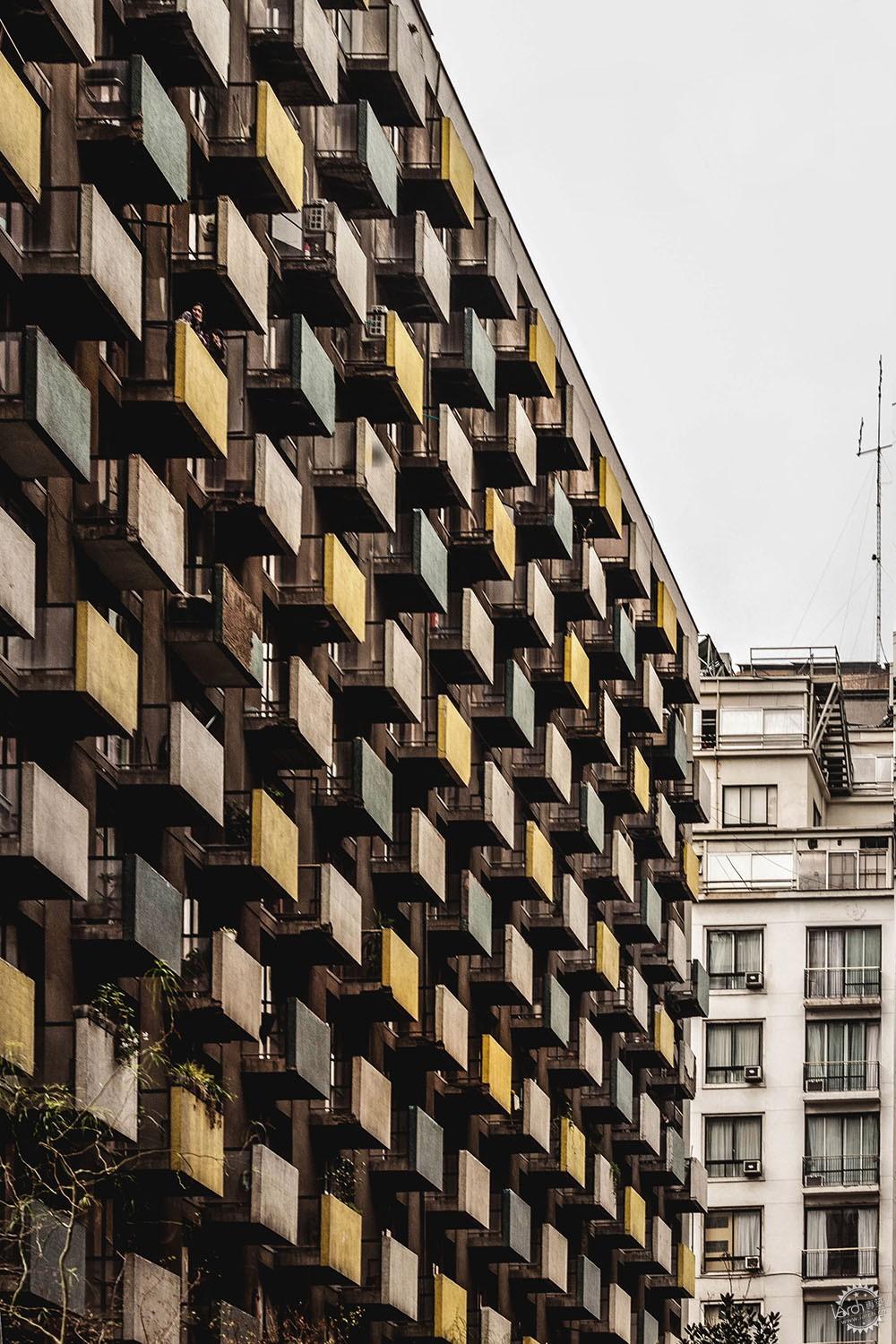
Image © María González
Huérfanos 1373 / Jaime Larraín + Osvaldo Larraín + Roberto Muller + Jaime Rodríguez
项目时间:1964年
地点:圣地亚哥Huérfanos 1373
Year: 1964
Address: Huérfanos 1373, Santiago
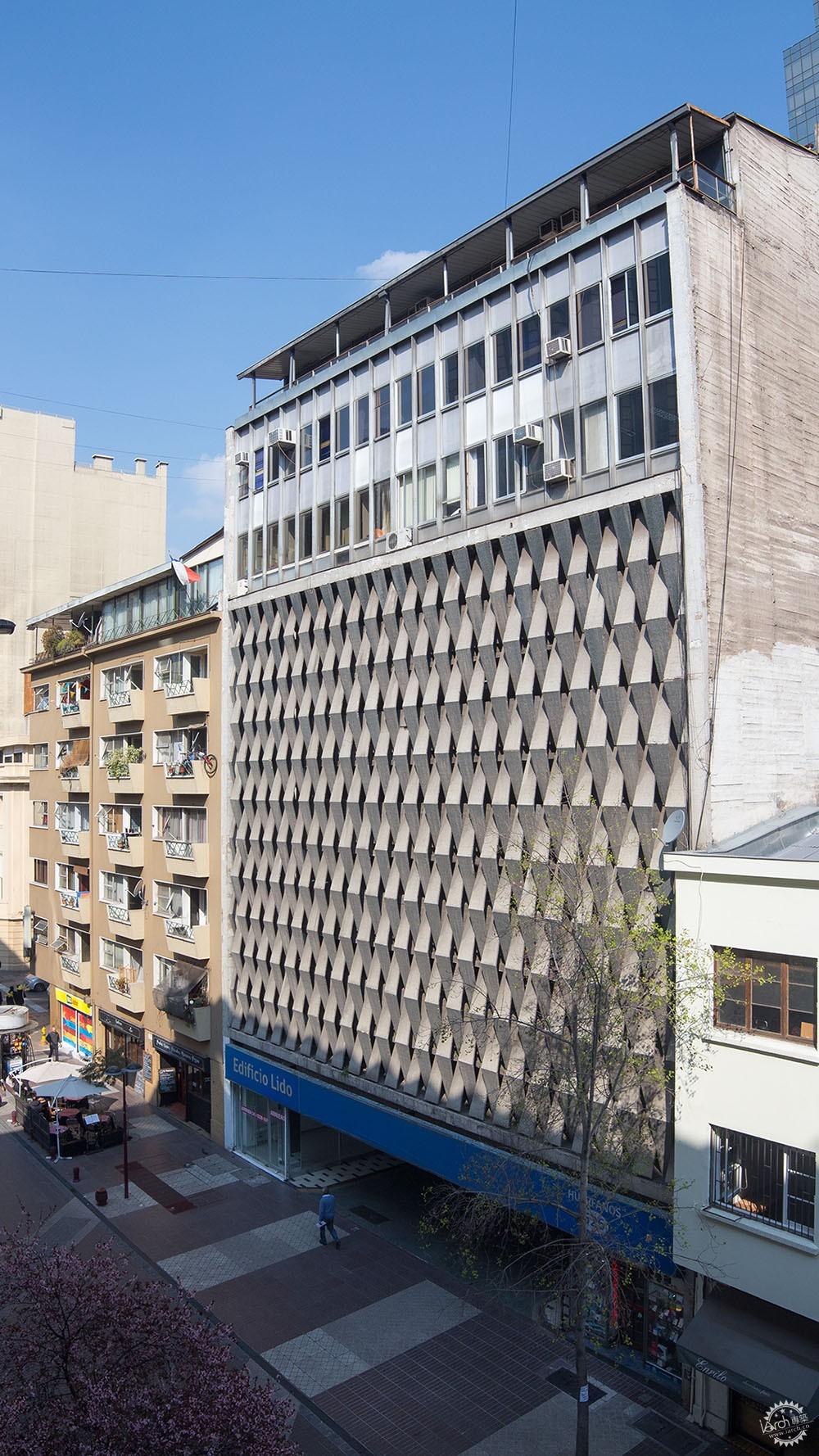
Image © Manuel Albornoz
Lido停车大楼/ Jaime Larraín + Osvaldo Larraín
该项目地上部分为9层,地下空间为3层,一共有252个停车位。建筑立面采用预制混凝土模块,上面装饰着彩色陶瓷。这座建筑的立面设计采用交错的手法,片状板材相互交织,形成特殊的韵律感,同时也让建筑产生更具竖向上的体量感。
项目时间:1964年
地点:Huérfanos 626
The Lido Parking Building / Jaime Larraín + Osvaldo Larraín
Nine floors plus three underground levels make for a total of 252 parking spaces. The facade is detailed with a prefabricated concrete module coated in lead-colored micro ceramics. Puyta plastic composition. The constructive system is very similar to that of fabric, where the point is interlocked to form the fabric, entering and exiting to produce the tie, giving it body and thickness, which runs vertically through the building.
Year: 1964
Address: Huérfanos 626

Image © Rubén Muñoz
Benedictine修道院教堂/ Gabriel Guarda + Martín Correa
项目时间:1964年
地点:Montecassino, Las Condes
The Benedictine Monastery Chapel / Gabriel Guarda + Martín Correa
Year: 1964
Address: Montecassino, Las Condes
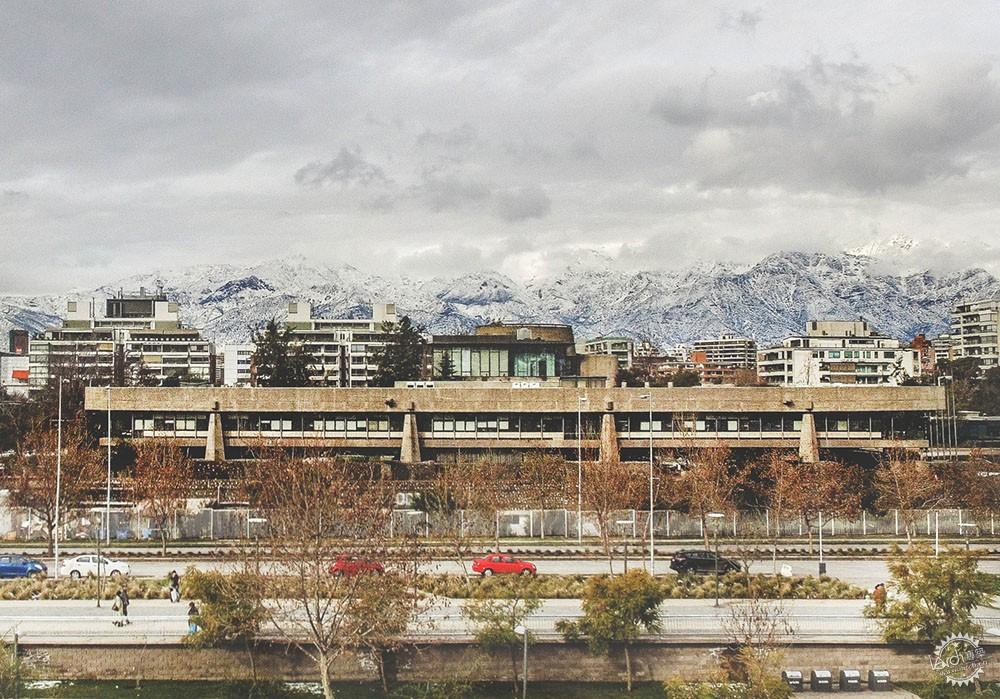
Image © María González
CEPAL / Emilio Duhart
项目时间:1966年
地点:比塔库拉 Dag Hammarskjöld 3477
Year: 1966
Address: Dag Hammarskjöld 3477, Vitacura
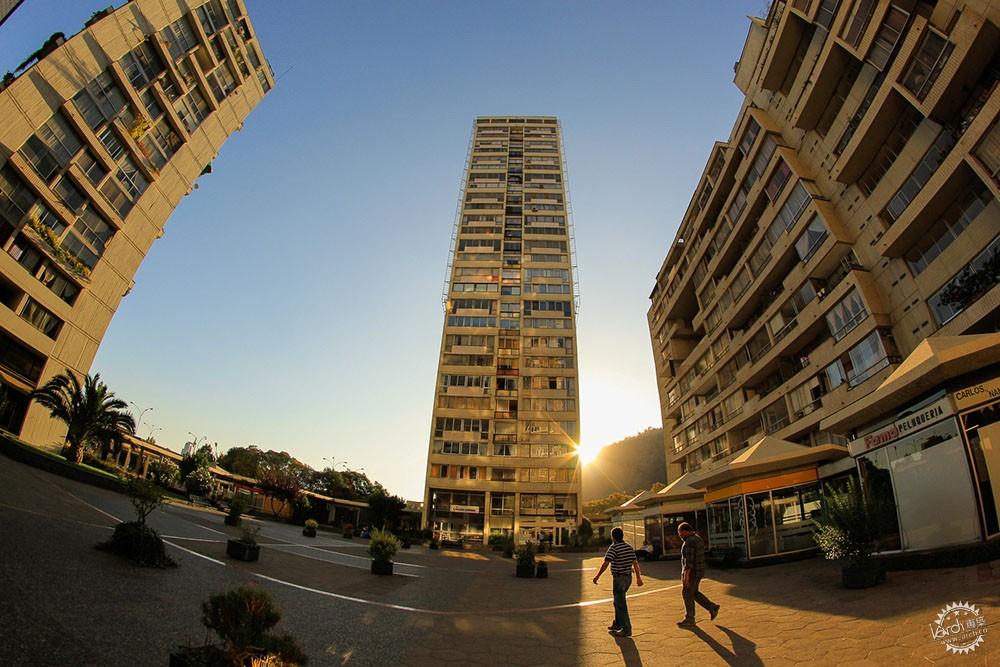
Image © Leonardo Benavente [Flickr], bajo licencia CC BY-NC-ND 2.0
Tajamar大厦/ Luis Prieto Vial + BVCH
项目时间:1967年
地点:Providencia 1100, Providencia
Tajamar Towers / Luis Prieto Vial + BVCH
Year: 1967
Address: Providencia 1100, Providencia
UTE大学(现在名为USACH)/ BVCH
项目时间:1957年-1967年
地点:其周边区域为Portales、Los Tilos、Matucana、Ecuador、General Velásquez、El Belloto、Las Sophoras
University Unit UTE (currently USACH) / BVCH
Year: 1957-1967
Address: the quadrant is limited by Portales (north), 洛斯蒂洛斯, Matucana, 厄瓜多尔, General Velásquez (Central Highway), El Belloto, Las Sophoras in Central Station.
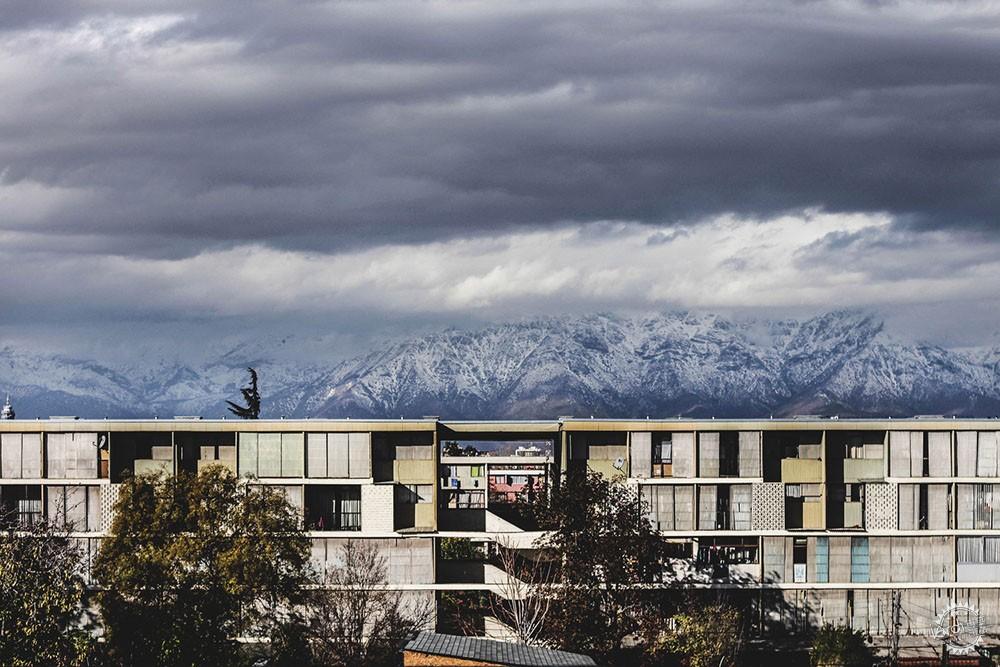
Image © María González
Portales社区单元/ BVCH
该项目开始于1952年,业主是私企员工退休基金会(Private Employees Pension Fund),这些退休员工将富余的收入用于购买住宅,成为圣地亚哥当时第一座实验性社区单元。该项目名叫“Portales社区单元”,基地面积共31公顷,其中包含有大量的住宅建筑,每座建筑之间的间距较大,形成传统的城市街区氛围。其中共有1860个住宅单元,每个单元一至两层不等,有的建筑中还有五至七层不等的复合式公寓。该建筑群的尺度宜人,在大体量的建筑体块之间形成了绿色空间,从而拥有适宜的建筑密度。
从城市设计的角度来说,街区和建筑为城市带来一抹绿意,同时也是周边公园在功能上的延伸,在Jorge Alessandri政府执政期间(1958年-1964年),官员们对住房分配进行了限制,从而取消了部分人行天桥,这对建筑的立面造成一定影响,同时也取消了部分集体基础设施,其中有办公楼、商业区、超市、学校、教堂、剧场,以及赌场。
项目时间:1954年-1968年
地点:其周边区域为Portales、Las Sophoras、El Belloto y General Velásquez
Portales Neighbourhood Unit / BVCH
This building emerged in 1952 as part of a project by the Private Employees Pension Fund which invested surplus earnings into housing for its owners, becoming the first experimental neighborhood unit in Santiago. Popularly known as Villa Portales, the 31-hectare project consisted of large blocks of houses arranged parallel and perpendicularly, which generated large gaps between each block of houses, representing traditional city blocks in an abstract way. 1,860 homes were proposed and distributed in one or two-story houses, and single and duplex apartments in buildings that range between five and seven floors. The decision to include houses was used as a strategy to mediate the scale between the large blocks and green spaces, allowing them to reach the required densities.
From an urban point of view, it was proposed that the blocks and houses be placed on a green surface that would function as the horizontal extension of the Quinta Normal park. A change in legislation during the government of Jorge Alessandri (1958-1964) limited the resources allocated to housing, which resulted in the discontinuity of footbridges, problems in the completion of facades, and the decision to cancel the construction of a set of collective facilities, which included offices, a commercial pergola, a market, a school, a church, a theater and a casino.
Year: 1954-1968
Address: the quadrant is limited by Portales (north), Las Sophoras, El Belloto y General Velásquez (Central Highway) in Central Station

Image Villa Frei / Jaime Larraín + Osvaldo Larraín + Diego Balmaceda
Frei住宅群/ Jaime Larraín + Osvaldo Larraín + Diego Balmaceda
项目时间:1965年-1968年
地点:其周边区域为Irarrázaval、Ramón Cruz Montt、Grecia、 Alcalde Jorge Monckeberg
Villa Frei / Jaime Larraín + Osvaldo Larraín + Diego Balmaceda
Year: 1965-1968
Address: the quadrant is limited by Irarrázaval (north), Ramón Cruz Montt, Grecia and Alcalde Jorge Monckeberg, in Ñuñoa
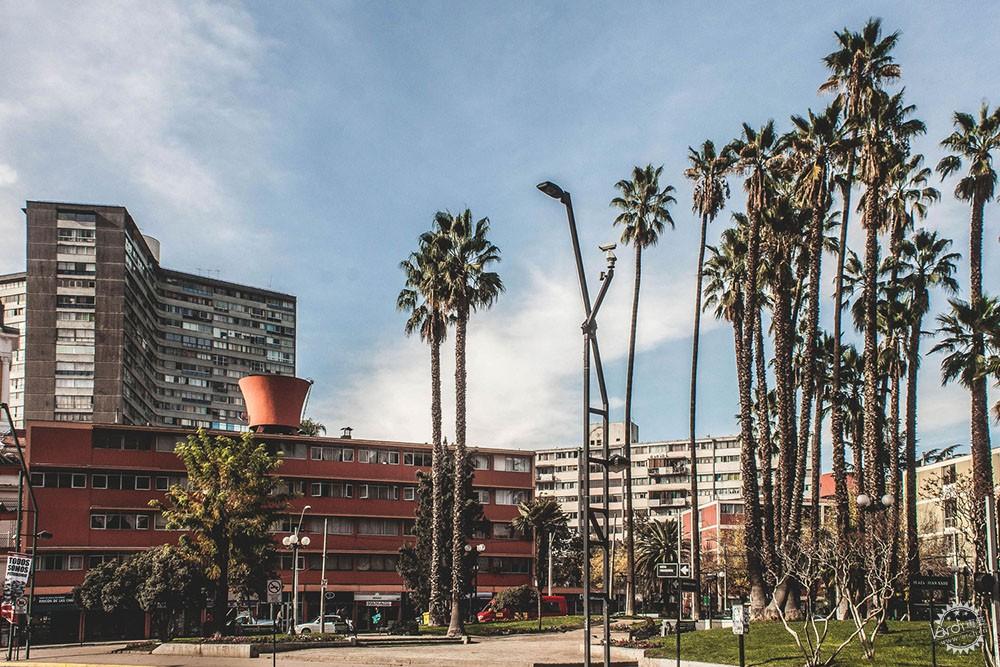
Image © María González
Providencia社区单元/ Carlos Barella Iriarte + Isaac Eskenazi
项目时间:1957年-1968年
地点:其周边区域为Providencia、Carlos Antúnez、Marchant Pereira、Humberto Bianchi、Doctor Solis de Ovando、Doctor La Sierra、Antonio Varas
Providencia Neighbourhood Unit / Carlos Barella Iriarte + Isaac Eskenazi
Year: 1957-1968
Address: the quadrant is limited by Providencia (north), Carlos Antúnez, Marchant Pereira, Humberto Bianchi, Doctor Solis de Ovando, Doctor La Sierra and Antonio Varas in Providencia

Image © Manuel Albornoz
Pedro de Valdivia大楼/ Eduardo Cuevas Valdés + Pedro Murtinho + Carlos Silva Anguita + Héctor Durán Ortiz de Zarate + José García Huidobro + Juan Casanova
项目时间:1965年-1971年
地点:普罗维登西亚
Pedro de Valdivia Building / Eduardo Cuevas Valdés + Pedro Murtinho + Carlos Silva Anguita + Héctor Durán Ortiz de Zarate + José García Huidobro + Juan Casanova
Year: 1965-1971
Address: Providencia 1979, Providencia
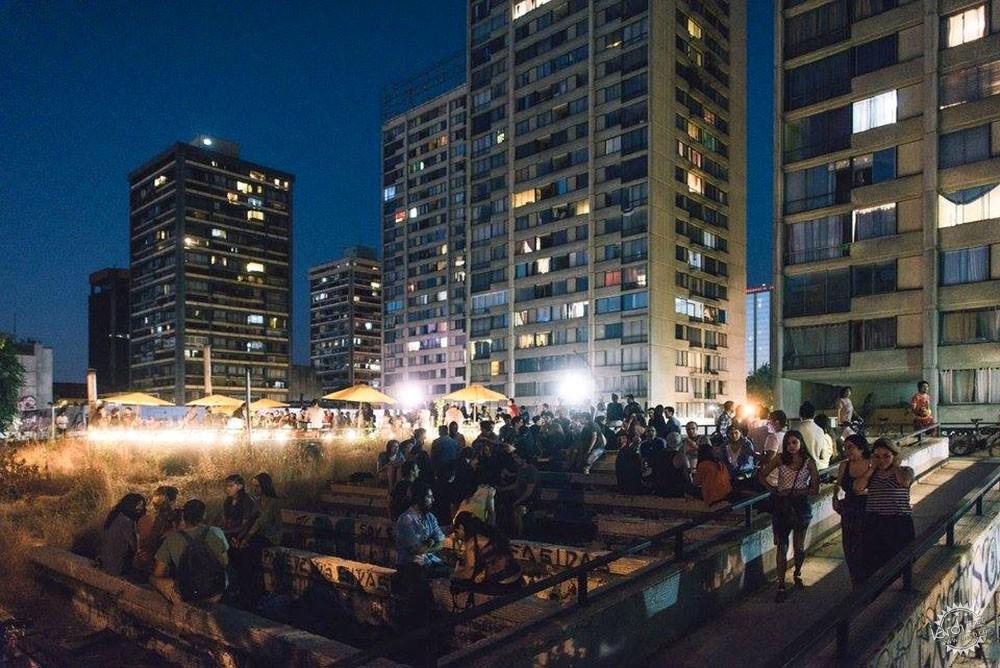
Image © Bruno Giliberto
圣博尔哈重建项目/ BVCH
项目时间:1969年-1974年
地点:其周边区域为Avenida Libertador Bernardo O'Higgins、Ramón Corvalán Melgarejo、Diagonal Paraguay、葡萄牙
San Borja Remodelling / BVCH
Year: 1969-1974
Address: the quadrant is limited by Avenida Libertador Bernardo O'Higgins (Alameda) (north), Ramón Corvalán Melgarejo, Diagonal Paraguay and Portugal

Image via Google Street View
中央邮政大楼/ Boris Guiñeman + Carlos Bresciani
项目时间:1970年-1974年
地点:中央车站
Central Post Office Building / Boris Guiñeman + Carlos Bresciani
Year: 1970-1974
Address: Exposición 221, Estación Central
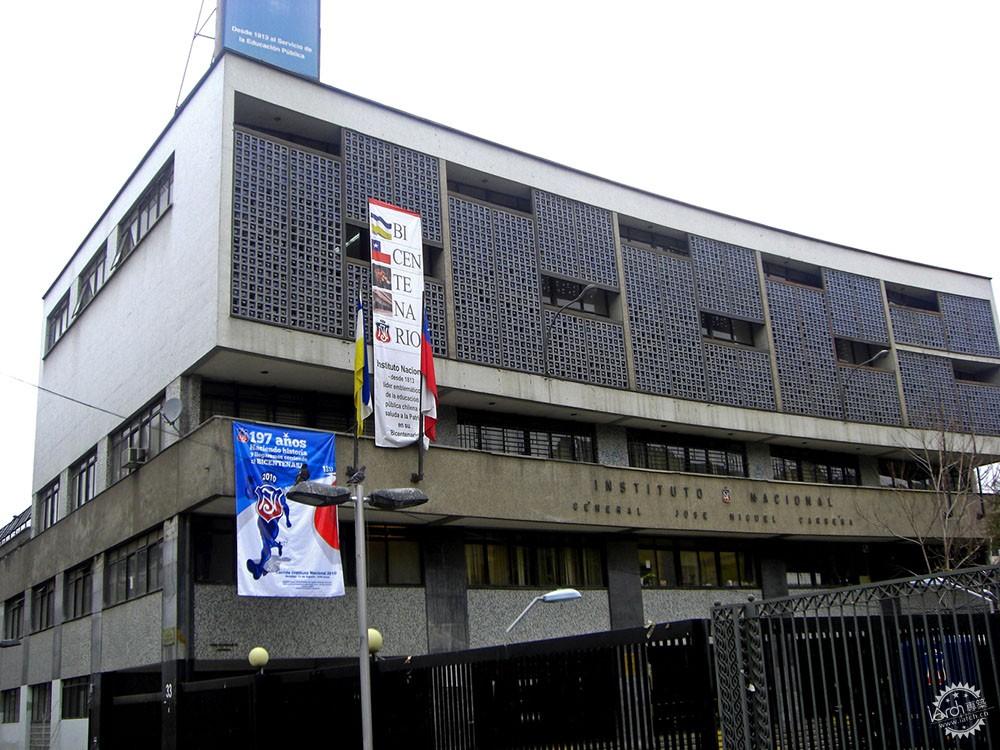
Image Instituto Nacional / José Llambías Merchant
国家研究院/ José Lamias Merchant
项目时间:1960年-1977年
地点:圣地亚哥 Arturo Prat 33
National Institute / José Lamias Merchant
Year: 1960-1977
Address: Arturo Prat 33, Santiago
参考文献
1、AOA (2005). Generaciones del hormigón. Revista AOA, 01.页码:02-19
2、Altikes, P. (2010). Composiciones geométricas y proposiciones urbanas. Revista AOA, 14.页码:22-45
3、Atria, M. & Torrent, H. (2004年)、Plan de trabajo a dos años (2004年-2006年)、智利某网站
4、Eliash, H. & Moreno, M. (1989年)、Arquitectura y modernidad en Chile / 1925年-1965年: una realidad múltiple、智利圣地亚哥:智利天主学院
5、Eliash D., H. (2008年)、Sergio Larraín García-Moreno的采访记录、Revista de Arquitectura, 14 (17) ,页码:49-54
6、Mondragón, H. & Mejía, C. (Eds) (2015年)、现代美国南部、智利圣地亚哥:Ediciones ARQ
7、Troncoso, N., & Kremer, J. (2008年)、智利现代主义运动:Población Exequiel González Cortés、Revista de Arquitectura, 14(17) 页码:94-101
References
AOA (2005). Generaciones del hormigón. Revista AOA, 01. Pág 02-19.
Altikes, P. (2010). Composiciones geométricas y proposiciones urbanas. Revista AOA, 14. Pág 22-45.
Atria, M. & Torrent, H. (2004). Plan de trabajo a dos años (2004-2006). Recuperado del sitio web de Docomomo Chile.
Eliash, H. & Moreno, M. (1989). Arquitectura y modernidad en Chile / 1925-1965: una realidad múltiple. Santiago, Chile: Universidad Católica de Chile.
Eliash D., H. (2008). Entrevista a Sergio Larraín García-Moreno: pionero de la modernidad en Chile. Revista de Arquitectura, 14 (17) , Pág. 49-54
Mondragón, H. & Mejía, C. (Eds) (2015). Sudamérica Moderna. Santiago, Chile: Ediciones ARQ.
Troncoso, N., & Kremer, J. (2008). Fragmentos del Movimiento Moderno en Chile: Población Exequiel González Cortés (ex Villa Olímpica). Revista de Arquitectura, 14(17). Pág. 94-101.
